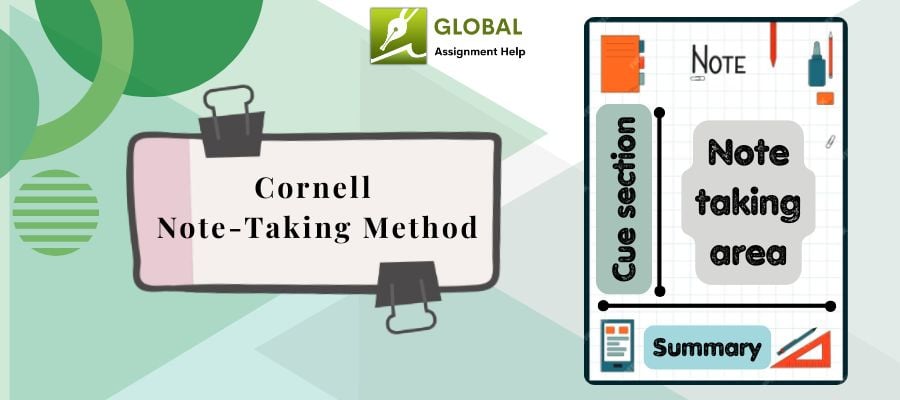How to Master Cornell Note-Taking: The Ultimate Guide

Have you taken pages and pages of notes only to realize that you can't find what you need when it is time to revise? Or maybe you scribble down everything that your teacher says, hoping that something ticks, but later, your notes look more like a jumble of thoughts than a study guide.
If this sounds familiar, you are not alone. But do you know there is a more innovative way to take notes that can boost your memory, focus and even your grades. It is called the Cornell note-taking method. Once you learn it, you will wonder how you ever studied without it. This blog will guide you through the entire note-taking process, highlighting its benefits and providing relevant examples.
What is the Cornell Method of Note Taking?
The Cornell method of note-taking is a way that promotes note-taking with clarity and precision. The sole purpose is to organize and summarise notes for better understanding and retention.
Professor Walter Pauk of the established Cornell University invented the Cornell note-taking system in the 1950s. He promoted it in his book, and then this method gained significant popularity.
But then, how to use Cornell note taking method? In this, you reflect on the ideas and notes you jot down and connect to the cues on the left side. Then, you write a summary at the bottom of the page for better comprehension and retention. This method is suited to every space like an office, school, etc.
However, the professor aimed it at college students. This technique provides students with the assignment help they need at the last minute.
Now that we know what the Cornell note-taking method is and why it came into existence. Let us move to the next section to explore how to use it with proper steps.
Unlock Cornell Secrets!Step-By-Step Guide to Using Cornell Notes
Using the Cornell note-taking system is simple when you understand its structure. The aim is to make note-taking more efficient, particularly during exams or assessment deadlines. Here, you need a blank sheet of paper (regular paper or digital ) and divide it into three sections.
Step 1-The Notes
The most significant part of your page will be reserved for your main notes. It is the section where you jot down crucial facts and points that are discussed in the class. It is vital to keep sentences short and use effective bullet points to save time.
Step 2 - The Cue
The place of the left side margin is the cue. In this section, you write down the key terms and questions that are related to your main notes. This step helps you with note-taking for exams and prepare without flipping through pages.
Step 3-The Summary Section
At the bottom of the page, you will find space to write a brief summary. It is a part where you reflect on what you learned. A couple of lines are enough to capture the essence of the entire page. It also strengthens your memory, and you achieve academic success with Cornell notes.
The Cornell note-tasking system makes studying less stressful. It turns passive listening into active learning and boosts overall comprehension. Now that you know what is the Cornell method of note-taking, let's explore why so many students like you prefer this approach over others.
Why Students Prefer the Cornell Note System
- The Cornell system offers a clear and organized layout that helps you to quickly find crucial information in the last-minute hassle.
- This way encourages you to reflect on your notes when you actively summarise them in your own words.
- Cornellstructure helps you to avoid unnecessary details and miss other parts of the lecture.
- It makes exam preparation easier as you write questions, keywords and other prompts in the cue section.
- Regular review and reflection on notes improve memory retention and overall comprehension.
- Learning with Cornell notes becomes easier because it breaks down complex topics and lectures.
- The short summary at the bottom saves your time and reinforces key concepts.
So. these are the benefits of Cornell note-taking method, and this is why students prefer this system. But you may be surprised to know that it has some other features which make it unique when compared with other note-taking methods.
Cornell Notes Vs Other Note-Taking Techniques
Note-taking is not just about jotting down facts; it is about learning in an innovative way. In this case, Cornell notes have a proven formula, but is it the best way for you?
Let's explore how the Cornell note-taking method competes with other popular techniques and discover which one can genuinely boost your memory and focus.
|
Feature |
Cornell Note System |
Other Note-Taking Methods |
|
Structure |
Clear layout with cues, notes, and summary |
Often unorganized and scattered
|
|
Review Efficiency |
Built-in system for easy self-quizzing |
Requires extra effort to review
|
|
Memory Retention |
Improves long-term retention through recall |
Limited recall support
|
|
Study Prep |
Ready-to-go for exams and assignments |
Needs rewriting or reorganizing
|
|
Adaptability |
Works for lectures, readings, and meetings |
Less flexible for different formats |
In this battle of note-taking, Cornell method of note-taking stands out for its structure, ease of review and comprehension. While other methods may have their strengths, Cornell notes adaptability makes it a top choice for learners.
Now, let's dive into some practical Cornell note-taking examples to help you learn more effectively and stay organized. Meanwhile, you can use a free plagiarism checker for your academic work.
Cornell Note-Taking Examples for Better Learning
Cornell's note-taking method is a proven way to help you organize information clearly. Also, this technique encourages active learning and easy review. But it is better to understand this with practical and real-life examples with a study topic. So, the following section shows an example of Cornell note-taking method.
Example: Topic - The American Revolution
|
Example: Topic - The American Revolution
|
So, this is a Cornell note-taking template that you can use. So, the next time you open your notebook, don't just begin to scribble. Instead, give your notes a framework, ask questions and reflect on your learning. That is what the Cornell notes system is all about. Your future self (especially during final exams) will thank you for it.
Final Thoughts
Let's be honest, note-taking can either be your secret weapon or your biggest headache. The Cornell note-taking method is simple, structured and effective. It helps you listen better and remember more in the long term. Also, it is a way to study smart, not study hard. Whether you are in high school or college, this note-taking system can transform your learning habits. Also, you can pair this technique with an expert essay writing service to excel in academics.
Free Tools

Easy to Use Paraphrasing Tool to Simplify Complex Academic Writing
Check Now
Get Structured Outline by Professionals for Your Dissertation
Check Now
Effortlessly manage citations and references with our smart referencing tool
Check NowLatest Blogs

- 30 Oct 2025
- 1380 Views

- 28 Oct 2025
- 219 Views

- 27 Oct 2025
- 355 Views

- 16 Oct 2025
- 312 Views
- Plagiarism
- Pricing
- Order Now
- Call Back
- Live Chat

Limited Time Offer
Exclusive Library Membership + Free 300$ Wallet Balance

Get $300 Now
Update your Number






















Thank you for submitting your comment on this blog. It is under approval. We will carefully review your submission and post it on the website.